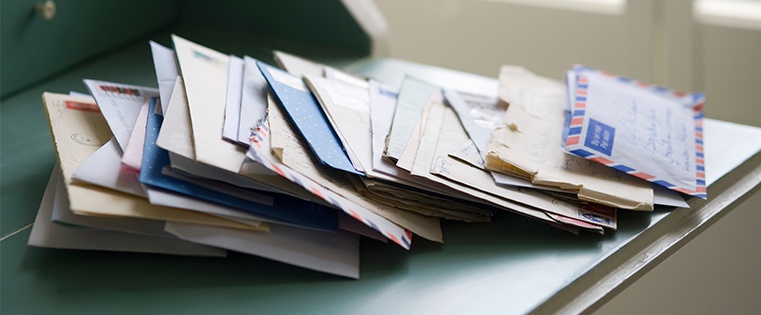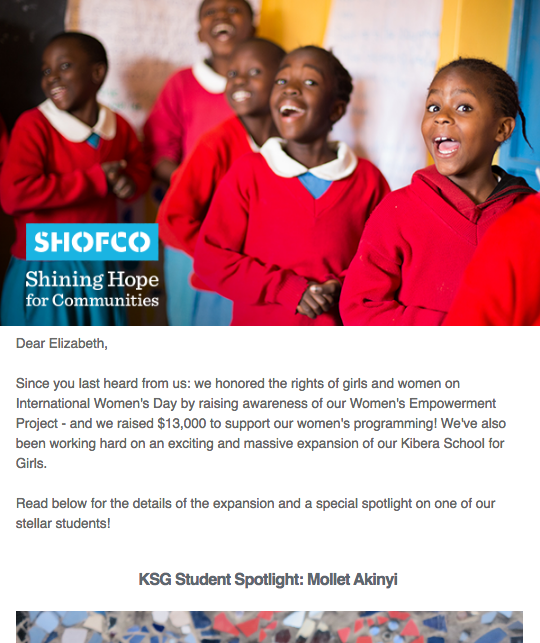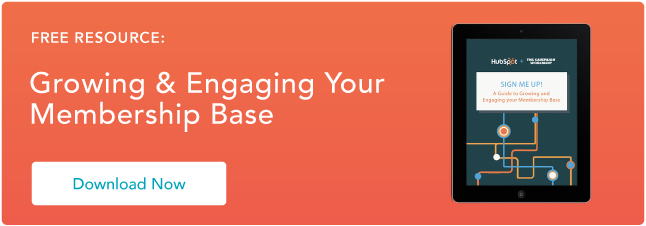
The monthly or bimonthly newsletter is a well-known pillar of nonprofit communications. Organizations use this content piece to educate supporters about their latest achievements and projects, keep donors engaged over time, and lead them to deeper levels of support.
With the outrageous number of messages that the average person receives online, organizations need to optimize their emails or risk ending up in the trash folder. Here are several tips to make sure your nonprofit newsletter reaches supporters and keeps them engaged.
1) Establish the Right Frequency
The frequency of your nonprofit newsletter can make all the difference between staying in subscribers’ inboxes and ending up in their trash—or, worse yet, being unsubscribed from altogether. The key is to send consistent, relevant content often enough to stay top of mind without annoying readers.
Unfortunately, there’s no single correct frequency for all newsletters. Every organization’s subscriber lists have different makeups, so you’ll need to perform tests to understand how often to communicate with your audience. A good starting point is to send an email at least once a month, or once every two weeks. You can then continue to conduct tests on samples from your subscriber list to determine an emailing frequency that generates the highest open and click-through rates.
2) Focus on Subject Lines
Without a great subject line, all of the hard work you put into crafting a fantastic email can go to waste. A generic “January/February/March Newsletter” likely won’t cut it; it’s crucial to invest the time and effort to come up with an intriguing subject line for each of your emails that will make readers want to click.
Your subject lines should be clear, descriptive, and tell readers exactly what they need to know and why it matters. Brevity is also key. Always aim for under 50 characters, but given that the majority of email opens occur on mobile, you may want to focus on subject lines that are 20 characters or less to account for smaller screens.
In any case, you want to deliver the most important information at the beginning of your subject line so that it can’t be missed. With such little real estate, make sure to cut out any words that don’t add value or let readers know why your email is worth their time. Also consider playing with subject lines that create a knowledge gap, intriguing readers to click through to learn more.
Here’s a snapshot of three nonprofit emails that all play with some of these tactics. The first and third emails listed here create a knowledge gap in their subject lines that makes readers want to find out what they’re talking about. The second email’s subject line is succinct while delivering the most important information right away.

Also notice how these emails all approach their “from” name differently. Whether you use your organization’s name, throw in the word “team” or “staff,” or use the name of a staff member, test different sender names to see which performs best.
3) Prioritize Attractive Design
Your email design should be clean, simple, and easy to read. Its design should guide the reader’s eye linearly from top to bottom, and it should be easy to quickly scroll and read through on a mobile device. For this reason, opt for a single-column layout. This will keep smartphone users happier, since readers on smaller screens would have to scroll horizontally to see a full multi-column email. In any case, you should be delivering responsive emails that adapt beautifully to any screen size in order to accommodate readers who are on the go.
All of your nonprofit newsletters should reiterate your visual branding elements, such as fonts, logo, and signature colors. When you keep these elements consistent across your communications, you reinforce your brand identity, boost your professionalism, and help readers recognize your messages.
Check out how Shining Hope for Communities begins their newsletter with a header image displaying their logo. A high-quality header image is also a great way to quickly capture your reader’s attention as soon as they open your email.

4) Make It Scannable
Your readers are typically on the move, especially if they’re reading from their mobile device. Combine this with the fact that the average attention span maxes out at eight seconds, and this means that most people will only spend a few moments reading your email. To sustain their attention and increase your chances of readers clicking through to your website, your messages need to be scannable.
Here are a few tips:
Use bullet points and subheadings where possible. This visually organizes your information and helps readers quickly scan and pick up the main topics. Also determine which information is most important to include in this email. Remember that you can link out to more details and facts with a “Learn More” button, so avoid packing your nonprofit newsletter with unnecessary text.
Use enlarged font sizes. Your text should be legible across mobile devices. To accommodate for small screens, HubSpot recommends using 14 px as a minimum font size for body copy, and 22 px for headlines.
Weave images throughout your newsletter. Not only do high-quality images enhance the overall look of your email and keep readers engaged, they also help break up walls of text and make your newsletter easier to skim. Consider using images of your donors, fundraisers, volunteers, beneficiaries, or photos from the field to delineate each section of your email.
Keep in mind that some desktop clients and mobile email apps block images by default. To get around this issue, make sure to add alt text, or alternative text, to your images. When images are disabled, the alt text appears in their place, giving readers context that would otherwise be lost.
Balance your text-to-image ratio. Emails with a lot of images may trigger some of your donors’ spam filters, so be sure to balance your images with live text (rather than only using images that display the text). Opt for a 1:1 ratio.
Use whitespace. Whitespace is the blank space between graphics, text, images, and other visual elements on a page. It’s a key component of effective design that draws readers’ eyes to important items in your email—like your CTAs, key text, or images—as well as keeps your newsletter from feeling cluttered. Think of it as giving your readers’ eyes some “breathing room” between your different content pieces.
A well-crafted, beautifully designed newsletter can be a powerful tool to keep supporters engaged with your work. As you optimize different elements of your email, it’s important that you continue to run tests to find what content, delivery schedule, and design work best with your subscriber list. Some extra attention can improve the overall open and engagement rates of your nonprofit newsletter and ultimately power your success.
from HubSpot Marketing Blog http://blog.hubspot.com/marketing/4-techniques-to-optimize-your-nonprofit-newsletter
Via http://blog.hubspot.com/marketing/4-techniques-to-optimize-your-nonprofit-newsletter

No comments:
Post a Comment